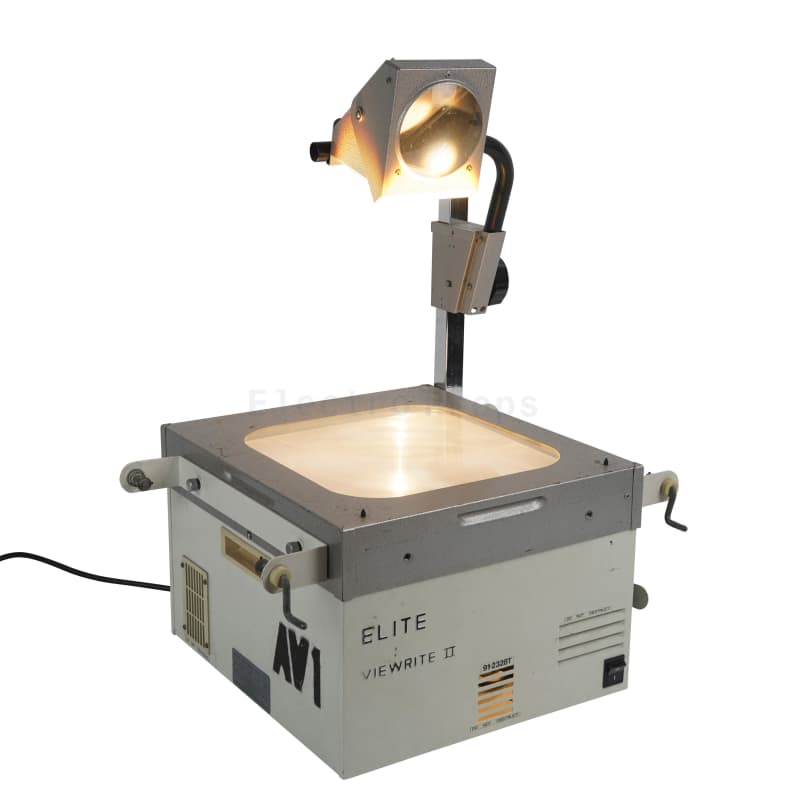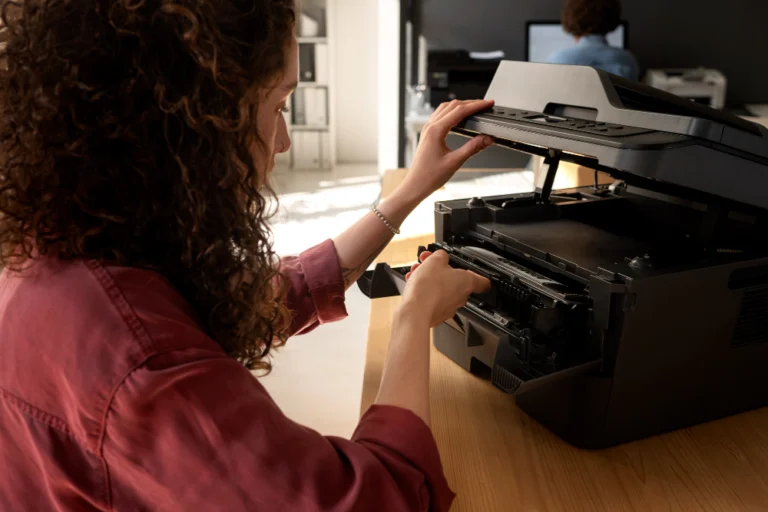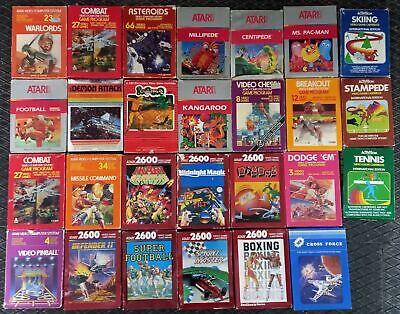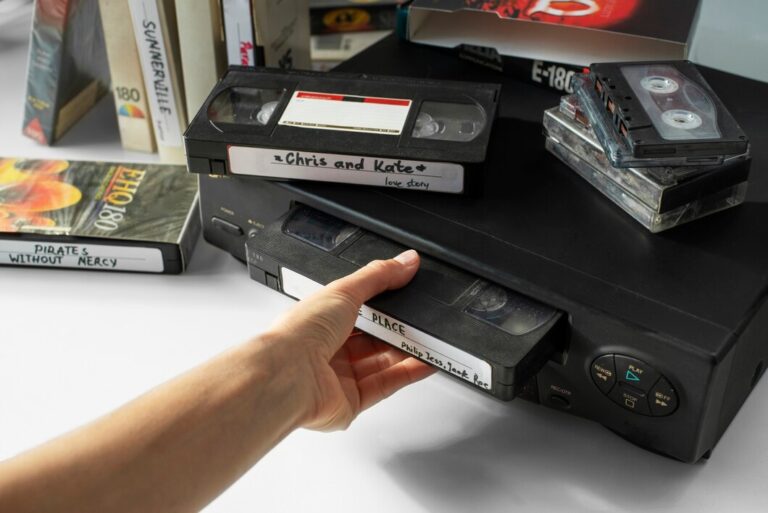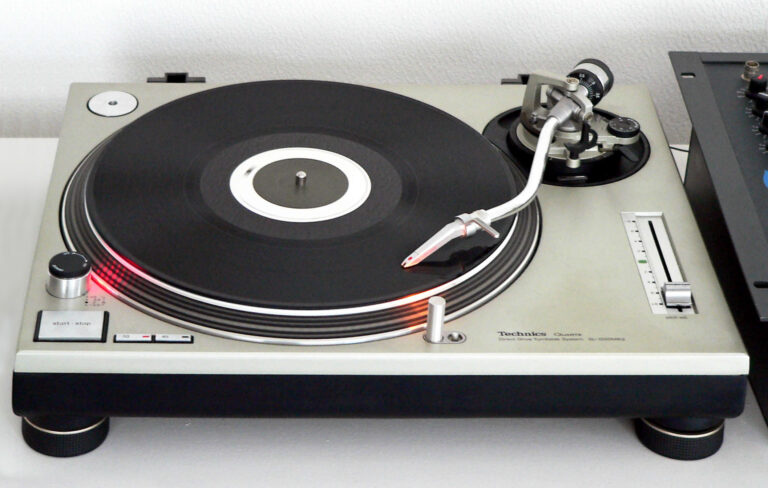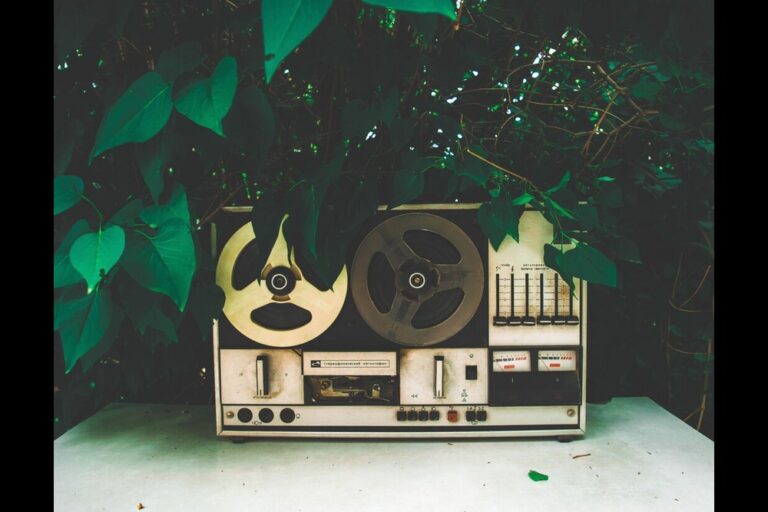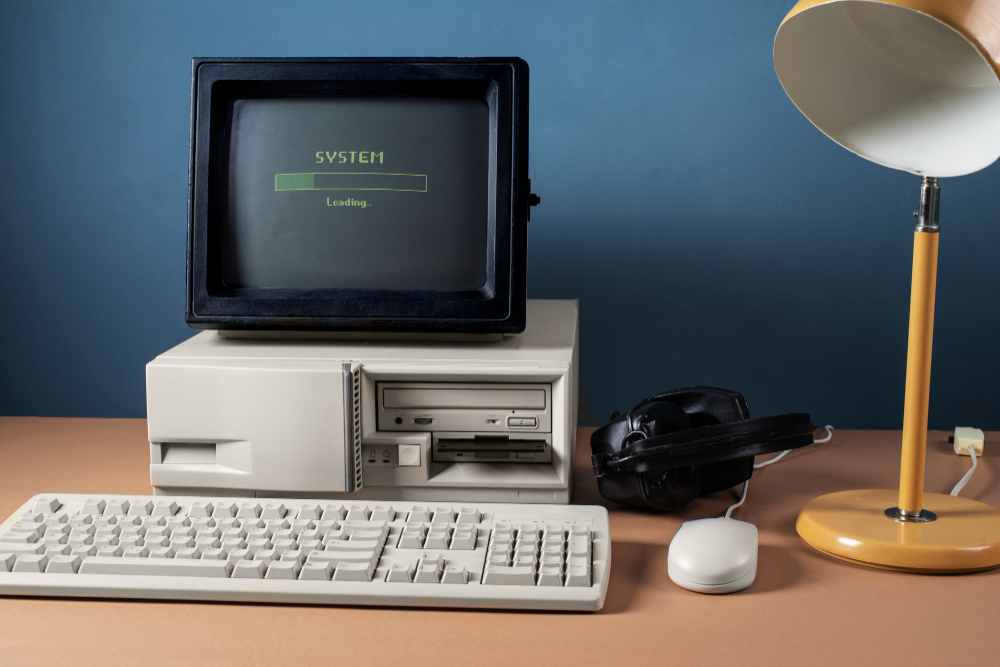
In an age of impossibly thin smartphones, instantaneous global communication, and artificial intelligence woven into the fabric of our daily lives, it’s easy to forget the technological titans that once stood on our desks, hung from our belts, and whirred in our living rooms. Embarking on a tour of these unforgettable retro tech gadgets is more than just a walk down memory lane.
These devices, now relegated to dusty attics and museum displays, were not just tools; they were the architects of our modern world. They were the gatekeepers of our memories, the conduits of our friendships, and the very first portals to the digital universe.
It is an archaeological dig into our own recent past, unearthing the roots of the culture and habits we now take for granted.
It’s a chance to reconnect with the tangible, tactile world of technology—the satisfying clunk of a closing cassette door, the mechanical whir of a disk drive, the weighty presence of a device that served a single, dedicated purpose. These nostalgic tech gadgets tell a story of innovation, of limitations that sparked creativity, and of a time when “connecting” required patience, wires, and a symphony of electronic screeches.
This journey is a tribute to the pioneers of personal technology, the devices that made us who we are today. We will explore ten iconic pieces of hardware, examining not just their function but their soul.
We’ll look at the cultural impact they had, the unique user experiences they offered, and why, despite being completely surpassed, they still hold a powerful grip on our collective imagination.
Prepare to rediscover the charm, the clunkiness, and the revolutionary spirit of these incredible vintage tech gadgets, the giants on whose shoulders our digital age was built. They may be obsolete tech gadgets now, but their legacy is immortal.
Tour of 10 Unforgettable Retro Tech Gadgets
A trip down memory lane awaits! From the iconic Sony Walkman to the revolutionary Game Boy, we’re taking you on a tour of 10 unforgettable retro tech gadgets. Rediscover the chunky, charming devices that defined an era and paved the way for the sleek technology we use today.
1. The Sony Walkman: The Soundtrack of a Generation
Before streaming playlists and pocket-sized MP3 players, the concept of a private, portable soundtrack was revolutionary. In 1979, the Sony Walkman TPS-L2 burst onto the scene and single-handedly democratized music. It was a simple device—a compact cassette player with a pair of lightweight headphones—but its impact was seismic. For the first time, your life could have its own background music, curated by you, for you.

The Walkman experience was deeply personal and tactile. It began with the ritual of the mixtape, a carefully selected anthology of songs recorded from the radio or vinyl records, each choice laden with meaning. The physical act of creating the cassette, labeling it with a pen, and sliding it into the Walkman was a creative process.
The limitations were part of its charm; you couldn’t skip tracks with a simple tap. If you wanted to hear a song again, you had to patiently fast-forward or rewind, listening to the high-pitched chipmunk chatter of the tape spooling. The gentle hiss of the magnetic tape was an ever-present audio texture, a warm imperfection we’ve since engineered away.
This iconic piece of retro tech gadgets wasn’t just a player; it was a companion on long bus rides, a motivator during jogs, and a bubble of personal space in a crowded world. Its decline began with the advent of the Discman, but it was the MP3 player that truly rendered the cassette obsolete. Yet, the Walkman’s legacy endures as the definitive icon of personal audio freedom.

2. The Nintendo Entertainment System (NES): Resurrecting an Industry
In the mid-1980s, the home video game market was in ruins, decimated by a flood of low-quality games and a loss of consumer confidence. Then came a gray and black box from Japan that would not only revive the industry but define it for a generation. The Nintendo Entertainment System, or NES, was not just a console; it was a phenomenon.
Launching in North America in 1985, the NES brought with it a roster of characters that would become global icons: Mario, Link, Samus, and Mega Man. The console itself was a masterpiece of design, with its front-loading cartridge slot that mimicked a VCR, making it feel more like a serious piece of home entertainment than a toy.
The rectangular controller, with its simple D-pad and A/B button layout, became the industry standard. The NES experience was one of discovery and often, brutal difficulty. There were no online tutorials or walkthroughs. Secrets were found through trial and error or whispered on the school playground.
Games like The Legend of Zelda came with sprawling maps and encouraged exploration, while Super Mario Bros. perfected the art of the side-scrolling platformer. The NES is one of the most beloved nostalgic tech gadgets because it represents a time of shared cultural experience, a universal language of 8-bit adventures that bound a generation together.

3. The Floppy Disk: The Icon of “Saving”
Long before cloud storage, USB drives, or even CDs, the humble floppy disk was the lifeblood of personal computing. Its image is so ingrained in our culture that it remains the universal icon for “save” in most software today, a testament to its foundational role. Originally an 8-inch behemoth, it was the 3.5-inch hard-cased disk, introduced in the mid-1980s, that became ubiquitous.
Using a floppy disk was a physical, deliberate act. You would slide the disk into the drive, and the computer would respond with a series of mechanical whirs, clicks, and grinds—the unmistakable sound of data being read or written. With a maximum capacity of 1.44 megabytes, its limitations are laughable by today’s standards.
A single, high-resolution photo would be too large to fit. But in its heyday, it was how you transported school essays, shared small programs, and backed up critical files. The floppy disk taught us the importance of backups and the anxiety of a “disk read error.”
It was fragile; a misplaced magnet or a bit of dust could corrupt your precious data. As one of the most essential vintage tech gadgets of the computing world, the floppy disk’s reign was long, but it was eventually dethroned by the superior capacity of CDs, Zip disks, and finally, the convenience of the flash drive.

4. The Pager (Beeper): The Precursor to Instant Messaging
In the 90s, the sound of a beep followed by a vibration on your hip was a sign of importance. The pager, or beeper, was the symbol of being connected and in-demand. It was a one-way communication device that bridged the gap between the landline and the mobile phone. In its simplest form, it displayed a phone number, signaling that you needed to find a payphone and return the call.
Later, alphanumeric pagers allowed for short, coded messages, giving birth to a unique digital shorthand (“911” for emergency, “143” for I love you).
For professionals like doctors and journalists, it was an essential tool. For teenagers, it was a status symbol, a way to coordinate social plans without tying up the family phone line.
The user experience was one of anticipation and mystery. A beep would interrupt a class or a conversation, and you would have to decipher its meaning. Who was it? What did they want? This asynchronous communication created a unique social dynamic.
The pager is a quintessential example of obsolete tech gadgets because its primary function was so completely and utterly consumed by the mobile phone, which offered two-way communication, text messaging, and so much more, making the beeper a charming relic of a more limited, yet somehow more exciting, time.

5. The Nokia 3310: The Indestructible Brick Phone
In an era of fragile glass smartphones that seem to crack if you look at them wrong, the memory of the Nokia 3310 feels like a legend from a mythical age. Released in 2000, this mobile phone became an icon not for its advanced features, but for its legendary durability, absurdly long battery life, and simple, intuitive design.
The Nokia 3310 was a masterclass in usability. Its T9 predictive text system made texting faster than ever before. It featured customizable ringtones and interchangeable faceplates, allowing for a degree of personalization that was novel at the time.
And, of course, there was Snake II, the highly addictive game that was responsible for countless hours of lost productivity worldwide.
The phone was a workhorse. It could be dropped, thrown, and abused, and it would almost always emerge unscathed. The battery could last for the better part of a week on a single charge, a feat that is simply unimaginable today.
The Nokia 3310 represents a different philosophy of consumer electronics—one that prioritized reliability and function over a slim profile and a massive screen. Its status as one of the most revered retro tech gadgets comes from its reputation as a trusty, no-nonsense tool that did its job perfectly.

6. The Palm Pilot: The Dawn of the Digital Organizer
Before smartphones put a supercomputer in our pockets, the Palm Pilot was a revolutionary step toward mobile computing. Introduced in the mid-90s, this Personal Digital Assistant (PDA) was designed to be a digital replacement for the paper-based organizer. It could store your contacts, manage your calendar, keep a to-do list, and take notes.
The key to the Palm Pilot’s success was its simplicity and its “Graffiti” handwriting recognition system. Using a stylus, you would write a stylized, single-stroke alphabet directly on the screen. It was easy to learn and surprisingly effective.
The device synced with your desktop computer via a physical cradle, a ritual that involved placing the Pilot in its dock and pressing a single button to harmonize your digital life. It was a sleek, professional device that signaled you were organized and tech-savvy.
The Palm Pilot was a true vintage tech gadget that laid the groundwork for the modern smartphone. It proved that there was a massive market for a handheld device that could manage your personal information. Its eventual decline was a direct result of its own success, as mobile phones began integrating its PDA features, making a separate organizer redundant.

7. The VHS Cassette Player: The Heart of the Home Video Revolution
For anyone who grew up in the 80s or 90s, the VCR was a cornerstone of the living room. This bulky, mechanical box gave families the unprecedented power to watch movies on their own schedule and even record television shows. The VHS cassette, a chunky plastic cartridge of magnetic tape, became the dominant format in a famous war against its rival, Betamax.
The experience of using a VCR was filled with unique rituals. There was the satisfying clunk of inserting the cassette, the whir of the machine pulling the tape in, and the often-fuzzy picture that required fiddling with the “tracking” knob to stabilize. The phrase “Be Kind, Rewind” was a mantra for polite video renters everywhere.
The VCR empowered the “movie night,” turning homes into private cinemas. It also gave birth to the video rental store, a cultural hub like Blockbuster where families would wander the aisles, debating which movie to bring home.
The VCR is a classic among nostalgic tech gadgets because it represents a shift in how we consumed media, giving us control over entertainment for the first time. Its demise was slow but inevitable, starting with the superior quality of DVDs and ending with the convenience of streaming.
8. The Overhead Projector: A Classroom Luminary
Before PowerPoint, smartboards, and digital projectors, the overhead projector was the undisputed king of the classroom and the boardroom. This simple yet effective device consisted of a large box with a bright lamp inside, a lens, and an arm with a mirror that would project the image onto a screen or wall.
The medium was the transparency—a thin sheet of clear plastic. A presenter would write or draw on it with special non-permanent markers, creating notes and diagrams on the fly. The experience was live and interactive. You could see the teacher’s hand moving, pointing out key details.
The low hum of the projector’s fan was the constant background noise of education. It had its quirks: the blinding light if you looked into it, the struggle to get the image perfectly in focus, and the occasional shutdown when the expensive bulb burned out.
As one of the most essential obsolete tech gadgets in the field of education, the overhead projector was a workhorse for decades. Its replacement by digital projectors was a leap in technological capability, but perhaps a step back from the direct, human-to-human connection that this simple box of light facilitated so well.

9. The Dial-Up Modem: The Noisy Gateway to the Internet
The sound of a dial-up modem connecting to the internet is a sound that an entire generation will never forget. It was a cacophony of beeps, screeches, and static—a digital handshake that was the price of admission to the World Wide Web. In the 90s, this was how most people experienced the internet for the first time.
Using a dial-up modem meant tying up the family phone line; if someone picked up the phone elsewhere in the house, your connection was instantly severed. Speeds were measured in kilobits per second, making the download of a single song an endeavor that could take hours. Web pages loaded slowly, with images appearing line by line from top to bottom.
This slow pace fostered a different kind of online behavior. You were more deliberate in your Browse, more patient. The experience was one of excitement and possibility.
Despite the limitations, you were connected to a global network of information, chat rooms, and communities. The dial-up modem is the ultimate retro tech gadget of the early internet era, a symbol of a time when getting online was a very real, and very loud, event.
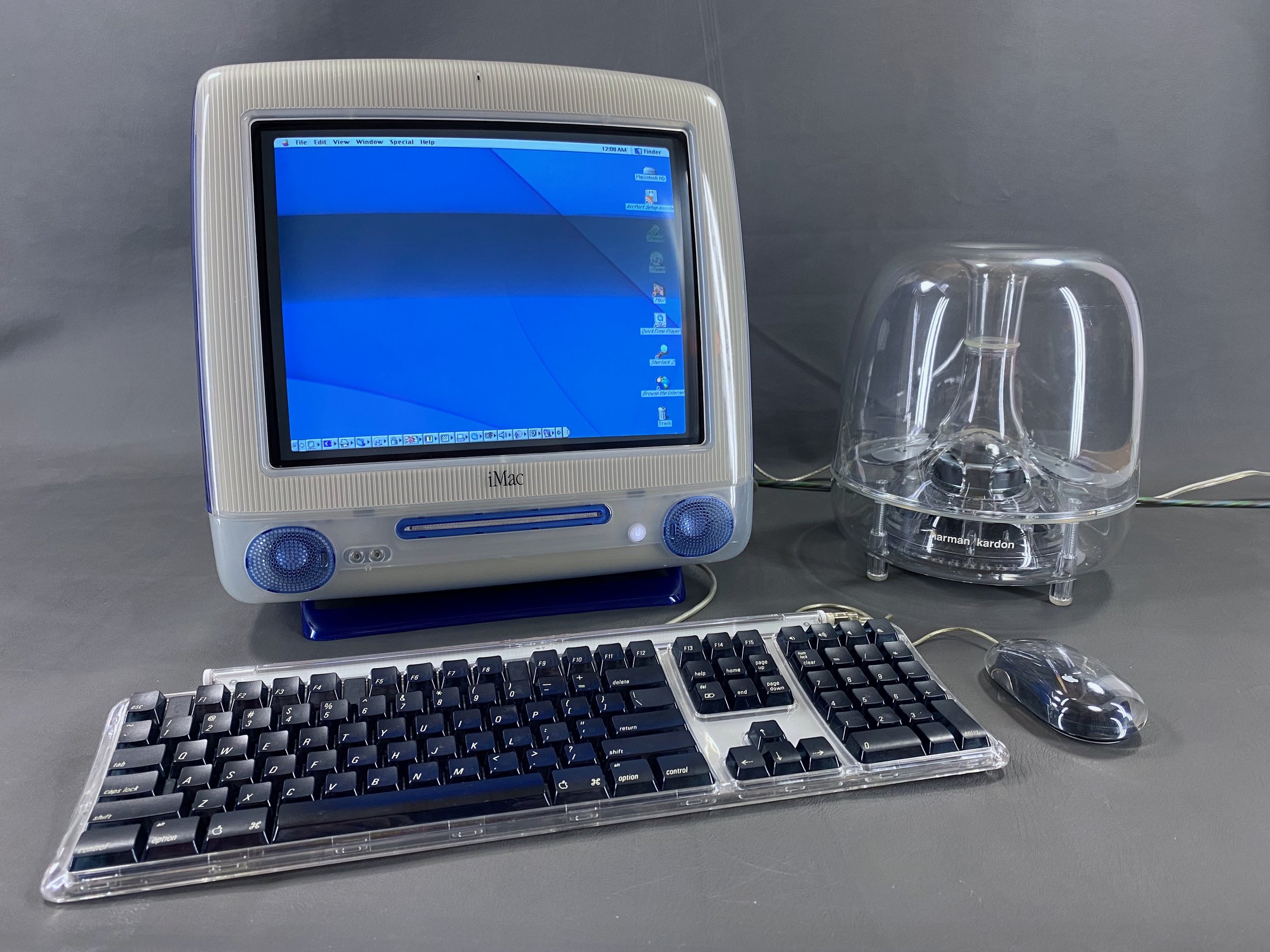
10. The Apple iMac G3: The Computer That Made Tech Fun
In 1998, the personal computer market was a sea of monotonous beige boxes. Then, Apple, under the leadership of a returning Steve Jobs, introduced the iMac G3. It was a radical departure from the norm: a vibrant, curvaceous, all-in-one computer that came in a range of “flavors” like Bondi Blue, Grape, and Tangerine.
The iMac G3 was designed to be friendly and approachable. It famously did away with the floppy disk drive in favor of a CD-ROM and was one of the first computers to embrace the new USB standard. Its translucent colored plastic allowed you to see the components inside, demystifying the technology.
It had a handle built into the top, encouraging you to move it around. The iMac G3 wasn’t just a tool; it was a piece of pop-culture design. It made a statement. It was a computer for “the rest of us,” designed for getting on the internet quickly and easily.
This machine is a landmark vintage tech gadget because it injected personality and style into the staid world of computing, proving that technology could be both powerful and beautiful. It set Apple on a new course and changed the way we think about product design forever.
Our tour through these ten unforgettable devices reveals a powerful truth: technology is about more than just speeds and specifications. It’s about the human experience. These gadgets, in all their limited, tangible glory, shaped our habits, our culture, and our connections to one another.
The Walkman taught us to build personal soundtracks, the NES taught us the joy of shared adventure, and the dial-up modem taught us patience. While we have since moved on to devices that are exponentially more powerful and seamlessly integrated into our lives, something has been lost in the transition—the deliberate, tactile interaction that made these older gadgets so memorable.
These obsolete tech gadgets serve as important anchors to our past, reminding us of how far we’ve come and the foundational steps that were taken along the way. They highlight a design philosophy that often prioritized durability and simplicity over a never-ending list of features.
In celebrating these nostalgic tech gadgets, we celebrate the ingenuity and the spirit of an era where each new device felt like a genuine leap into the future. They may be gone from our desks and pockets, but their echo can still be heard in every click, tap, and swipe of the modern world they helped create.
